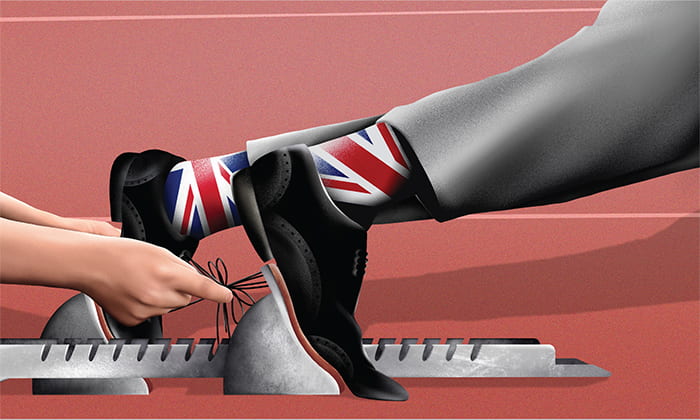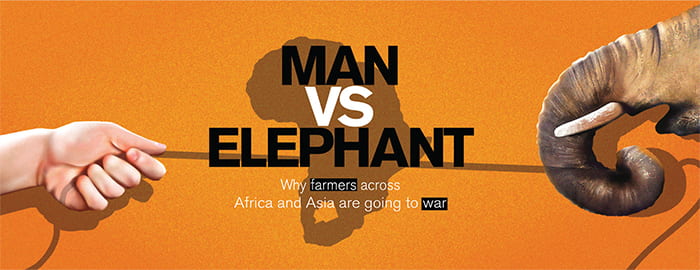ALUMNI: EDITORIAL ILLUSTRATION/DESIGN
JAKE HAWKINS
We talk to Jake about his experience of starting work as an in-house illustrator/designer at the Telegraph almost straight after graduating from the BA Illustration course in 2019.
Q: How did you find the transition from studying illustration to working professionally as a full-time in-house designer and illustrator?
Fortunately, the transition to working professionally as an illustrator/designer came naturally to me. I thrive off schedule and routine, so working in-house provides the daily structure that I would otherwise have yearned for after completing my studies.
Q: Are there any skills in particular that you developed on the BA Illustration course which you have found to be essential in your new job? What new skills have you had to develop?
There are numerous very important transferable skills that I learned on the course at Falmouth, but conceptual thinking and visual problem solving have been crucial in my role as a designer from the get-go! Whether I’m working on an illustration for print or an animation for Snapchat, these skills determine the strength of the outcome. Since getting the job, I have had to develop my animation skills and my understanding of Adobe After Effects.
Q: What does your role entail specifically? Can you describe a working day and a working week?
In my role as a designer I work as part of the ‘Visual Storytelling team’ in the editorial sector. My time is split between working on design and Snapchat. On the design shift I create illustrations for The Telegraph’s website, paper and social media channels, reporting to the ‘design lead’ and ‘design director’, whilst occasionally pitching my ideas to the editors. Time scales can vary for print illustrations, but I usually have one to three hours (from the briefing to submitting the artwork). I have less time to develop illustrations for social media channels e.g. I might have a time limit of just 30 minutes to develop an illustration to be used for the website only. I also work on longer term projects including a weekly column which I illustrate. When on Snapchat I am aiming to produce on average 4-6 animations daily. I will work alongside one fellow designer covering the main news of the day, reporting to the ‘Snapchat Editor’ and getting design approval from the ‘Motion Lead’. The edition goes live each day at 4pm and approximately 11 animations get uploaded, with average viewing figures of over 1 million people! The work environment is fast-paced with tight deadlines, but I am well looked after and supported in my role, doing what I love, surrounded by fellow creatives and good people.
Q: How is your time divided between design and illustration? How have the illustrations you have developed for the Telegraph started to shape the direction that your illustration work is taking? As your job is full time, is it all consuming, or are you able to develop any other illustration work outside the Telegraph, across other areas of illustration?
My time is divided pretty equally between design and illustration at work, with the two overlapping considerably. At Falmouth my editorial illustrations tended to focus most heavily on social issues, centring around equality. However, since working at The Telegraph my subject matter has expanded to incorporate business, finance and of course politics, which is great as it opens up my working practice and prevents me from limiting myself to one or two areas of interest. The job is full-time which keeps me busy, however I have evenings and weekends to work on other illustrative projects if my interest is sparked.
Q: You have described the high pressured atmosphere of working in-house at a national newspaper and the very tight deadlines that you are working with daily. How have you adapted to thinking and creating powerful concepts within that sort of challenging timeframe? Are there any specific strategies you use to develop strong ideas in a short timespan?
When working the design shift I am juggling multiple projects at once. I am briefed virtually through Trello (a project management site) with a set deadline, however sometimes if the brief is more obscure, the commissioner and I will talk in person (time permitting). I typically start at 9:30am and my first deadline can be as early as 10am. Usually in this case all the visual assets will already be supplied, they just need to be designed. If I am working on an illustration for print, I will start working on it from around 4pm; before that I am prioritising briefs with earlier deadlines. The deadline for print is usually the last of the day for me, around 6-7pm. Conceptualising and visualising an article in this time period can be tough. Sometimes I am briefed on the desired outcome, but I may disagree and propose an alternative, or there may be no initial ideas, so I will develop the idea generation stage myself. Having confidence and belief in my work helps me get the job done, which is the best strategy! I am always surprised by how quickly I can produce an illustration in high pressure situations.
Q: When working within a large organisation the approval process for ideas can be substantial and can require many people to sign them off (page editors, section heads etc.). Is this an issue you have had to deal with, working in-house, or is it more streamlined than that? Do you ever find that there are ‘too many cooks’ trying to feed into the ideas process?
Each piece of design I produce gets approved at the rough and the final stages by either the design lead or art/design director before I submit it. Usually this is a quick process in-house as those who can give it the go ahead are never too far away. More often than not it is approved and if changes are needed, they are usually minor. Occasionally an already approved idea will be given to me and it just needs illustrating; in this case they know the style that I will bring to the piece and the approval is subject only to the final. I’m not always fond of the pre-approved concepts, but fortunately as designer I am able to offer alternatives and pitch my own conceptual ideas which best flatter my illustrative style. The editors are very receptive to this and respect the unique skillsets the designers/illustrators have to offer!
Q: It is a requirement these days to produce artwork for print and the digital environment, often with differing proportions and sizes. How do you resolve working within these constraints?
This is definitely the case nowadays! Always making sure your original file is layered is a good place to start. Sometimes I may need to provide three completely unique formats of the same illustration (e.g. portrait for print, landscape for web and square for social media) with the specifications for print being CMYK and online being RGB. Composition is key and being able to re-size all the main components is vital, as what works for portrait won’t work for landscape. Also, I make sure that I start each file at 450dpi. By doing this, if smaller components need scaling up for an alternative format the quality won’t suffer. I find this gives me plenty of leeway, with newsprint at approximately 200dpi and web at 72dpi (I like to err on the side of caution).
Q: Presumably, there are times where you have the opportunity to create a static illustration for print that can be animated as a GIF for the digital iteration of a publication? What are the main considerations when thinking about how best to leverage that potential for animation?
Definitely, my most relevant experience with this thus far would be animating print illustrations for use on Snapchat. Again, the key to this is layers! Obviously, files will be created differently if you anticipate animating, however it is good practice to layer the key components regardless, as their future usage is limitless. The worst mistake you can make is flattening your final, at least without making a duplicate, as this can make animating near impossible or at least incredibly time consuming.
My best advice would be to have a separate background layer every time and make each new component its own entity. Even incorporating a small amount of motion into an illustration can greatly improve its potential. I would advise students to utilise all the digital resources available at Falmouth and to spend time developing these skills on your own.
Q: One issue that many students fail to fully appreciate is how much an image can change when converted from RGB to the CMYK print colour space and how poor the print quality can be on newsprint, especially if the image was created digitally to start with. Have you found this to be the case and if so, how do you calibrate your image for the low-fi restrictions of print?
Most of my illustrations are created in Procreate on iPad Pro, which is limited to RGB. I therefore have experience with the big changes that can occur when converting colour profiles. When doing an illustration for print I always request that the colour department print out my illustration on newsprint before I submit it, to ensure that the colours are as similar as possible to how they appear on screen. I also use this opportunity to see how much detail has been lost, and to work out whether I need to go back into the original file to make amendments.
This can be a bit of a back and forth process, but it is necessary for perfectionists like me, therefore time management is key. Also, even if an illustration is started in CMYK, you would still experience a change in colour once it is printed, due to the newsprint’s dull, off-white appearance; therefore sometimes it might be necessary to create two versions, with one being considerably brighter than the other.
Q: Newspapers contain a wide range of subject matter: from opinion pieces and news-based content to lifestyle, culture, the arts and society at large. Do you find yourself working across the breadth of the paper’s content? If so, how do you adapt and adjust your working processes to the differing subject matter?
Yes, certainly! Although certain topics make more of an appearance than others, especially in the current political climate! For example, I often create content based around Brexit, finance, technology and business. Regardless of the subject matter, I always start by mind mapping, conceptualising and figuring out the tone/voice of the content. If a subject is more delicate or sensitive, it may be better to create more visually abstract outcomes. Some subjects are naturally more playful and engaging than others, and are therefore easier to work with, but I enjoy the challenge and always look forward to seeing the outcome, whether that’s online or in print.







